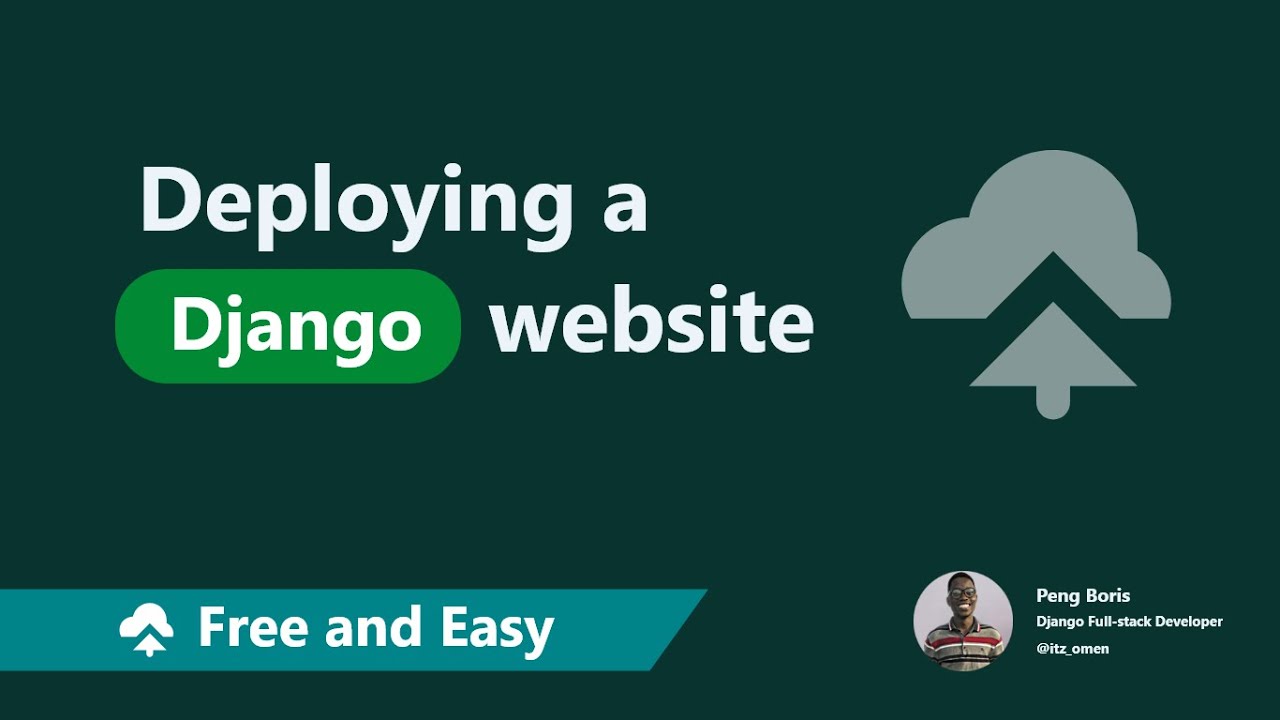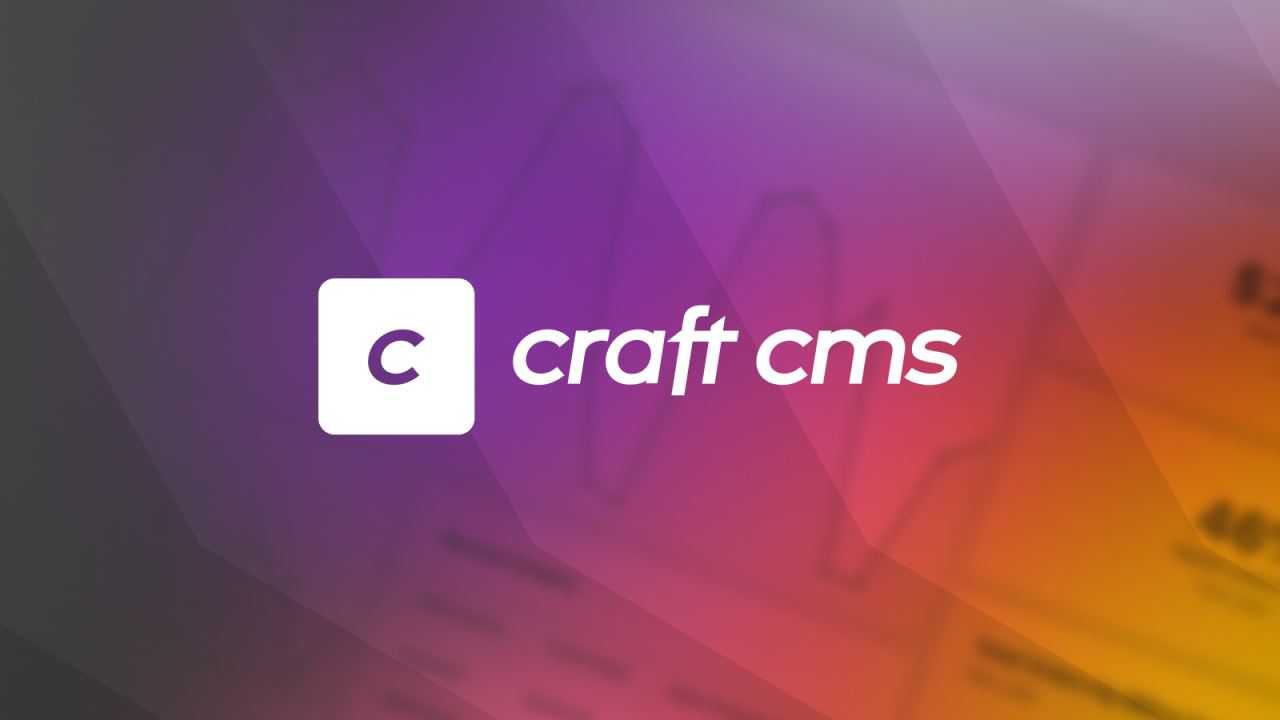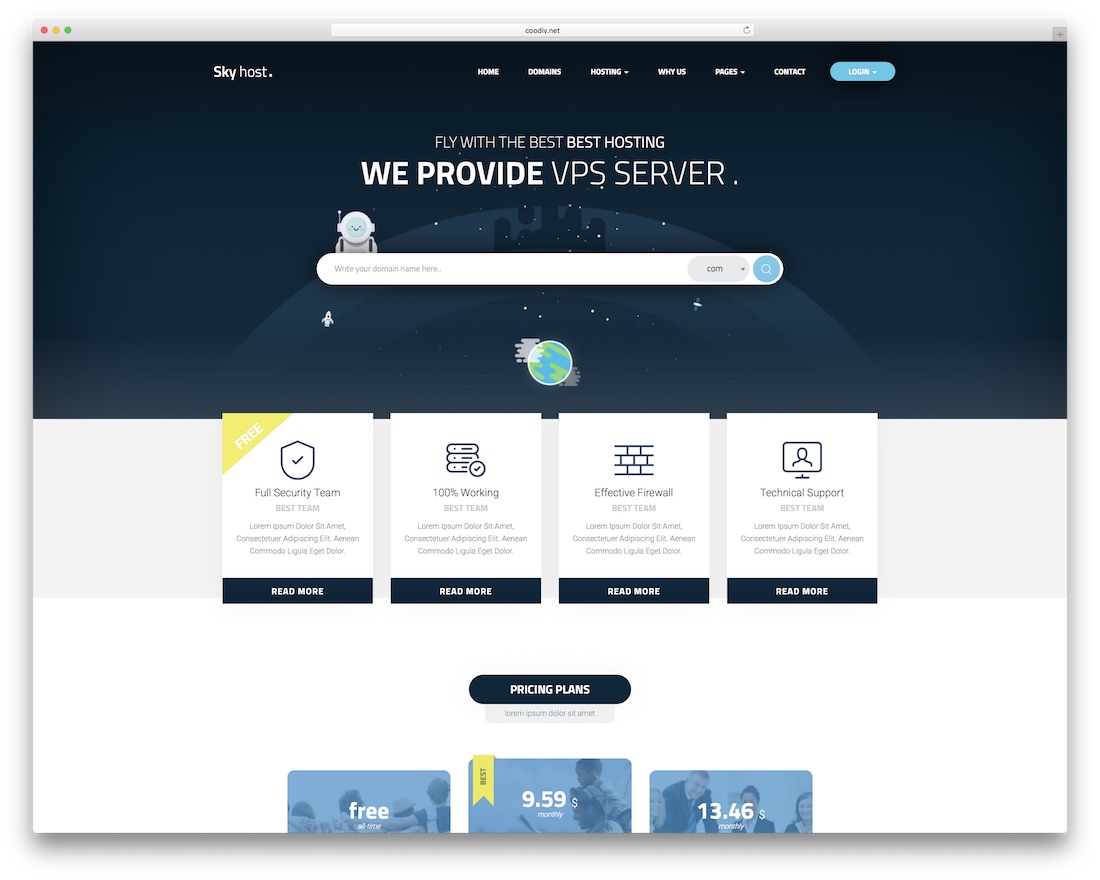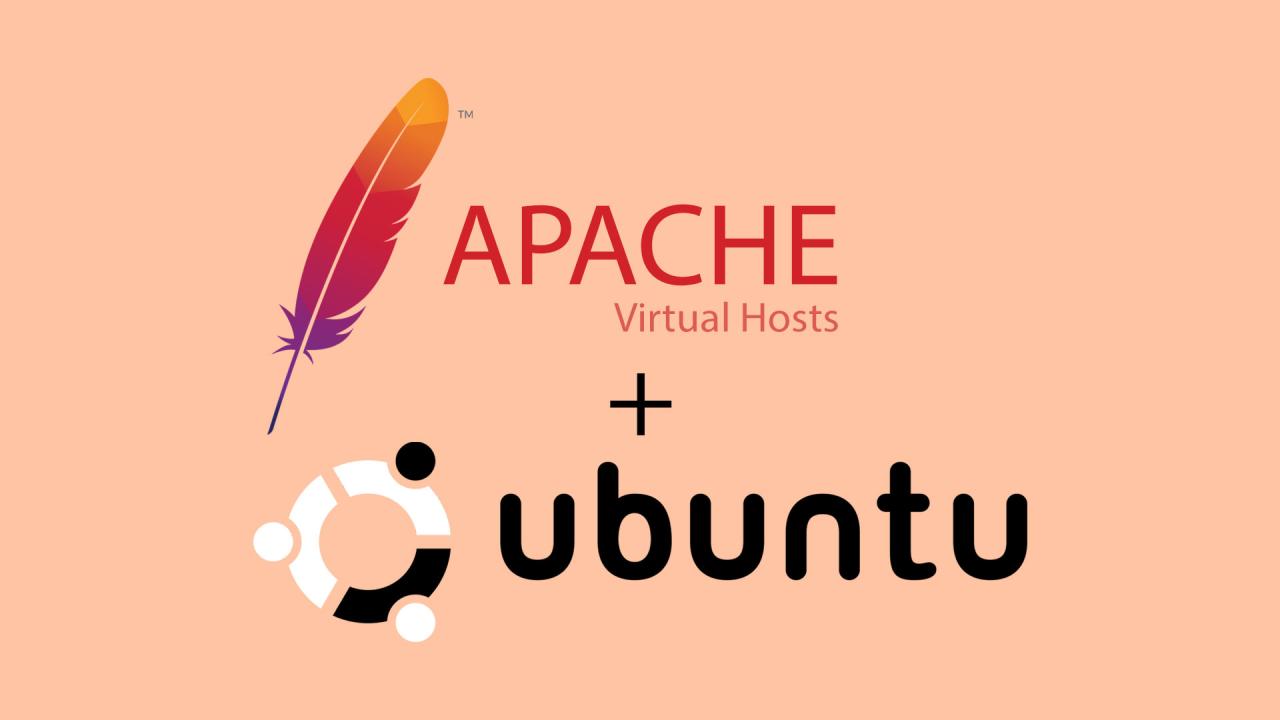Host django website – Hosting a Django website involves choosing the right platform, deploying your application, and managing its performance. It’s a journey that begins with understanding the core concepts of Django and web hosting and culminates in mastering advanced techniques like load balancing and Docker.
This guide provides a comprehensive overview of the process, covering everything from selecting the ideal hosting provider to optimizing your website for speed and scalability. We’ll delve into the essential features of Django hosting, discuss security considerations, and explore advanced deployment strategies to ensure your website is both reliable and robust.
Understanding Django and Web Hosting
This guide will explore the core concepts of Django as a web framework and delve into the various web hosting services available for your Django projects. We’ll examine the essential components of a Django project and compare the features and advantages of different hosting types, empowering you to make informed decisions about your web hosting needs.
Django Framework
Django is a high-level Python web framework designed to promote rapid development and clean, pragmatic design. It follows the Model-View-Controller (MVC) architectural pattern, separating concerns and promoting code reusability. Django provides a robust set of built-in features and tools, simplifying common web development tasks.
Core Components of a Django Project
Django projects are organized into several key components:
- Models: Represent data structures and their relationships within your application. They define the data your application will store and manage, and they’re responsible for interacting with your database.
- Views: Handle user requests and return responses. They determine the logic behind how your application responds to specific user actions, such as displaying a webpage, processing form data, or retrieving data from the database.
- Templates: Define the structure and presentation of your web pages. They use a template language to render dynamic content, allowing you to create reusable components and manage the visual layout of your website.
- URLs: Map incoming requests to specific views. They act as the bridge between the user’s request and the appropriate view function within your Django application.
- Settings: Configure your Django project, including database settings, security settings, and application-specific configurations.
- Middleware: Intercept and modify incoming requests and outgoing responses. They can perform tasks like authentication, authorization, or logging.
Web Hosting Services
Web hosting services provide the infrastructure necessary to make your Django website accessible on the internet. They offer different levels of resources, features, and support, catering to varying needs and budgets.
Shared Hosting
Shared hosting is the most affordable option, where multiple websites share the same server resources. It’s suitable for small, low-traffic websites with limited resource demands.
- Pros: Cost-effective, easy setup, and basic support.
- Cons: Limited resources, potential performance issues due to shared resources, and security risks.
Virtual Private Server (VPS) Hosting
VPS hosting provides a virtualized environment on a physical server, offering dedicated resources and greater control over the server environment. It’s a good option for websites with moderate traffic and resource requirements.
- Pros: Improved performance compared to shared hosting, greater control over the server environment, and better security.
- Cons: More expensive than shared hosting, requires more technical knowledge for management.
Cloud Hosting
Cloud hosting utilizes a network of servers to distribute your website’s resources. It offers scalability, flexibility, and high availability, making it ideal for high-traffic websites and applications.
- Pros: Scalability, flexibility, high availability, and advanced security features.
- Cons: More expensive than shared or VPS hosting, requires understanding of cloud infrastructure and management.
Dedicated Hosting
Dedicated hosting provides you with an entire server dedicated solely to your website. It offers the highest level of performance, security, and control. It’s suitable for large, high-traffic websites with critical performance requirements.
- Pros: Maximum performance, complete control over the server environment, and enhanced security.
- Cons: Most expensive option, requires significant technical expertise for management.
Choosing the Right Hosting Type
The best hosting type for your Django project depends on several factors, including:
- Website traffic: Consider the expected volume of traffic your website will receive.
- Resource requirements: Determine the amount of CPU, memory, and storage your website needs.
- Budget: Balance your hosting costs with your website’s requirements.
- Technical expertise: Assess your level of technical knowledge for server management.
Choosing the Right Hosting for Your Django Website
Selecting the right hosting provider is crucial for the performance and reliability of your Django website. It’s not just about finding the cheapest option; you need to consider factors that directly impact your website’s functionality, security, and user experience.
Key Factors to Consider
The following factors are essential when choosing a hosting provider for your Django website:
- Performance: Your website’s speed and responsiveness are critical for user satisfaction and search engine ranking. Look for providers offering fast servers with ample resources like CPU, RAM, and storage.
- Security: Your website and user data need robust security measures. Choose a provider that offers features like firewalls, intrusion detection systems, and regular security updates.
- Scalability: As your website grows, you’ll need a hosting provider that can scale with your needs. Consider providers offering flexible plans and options for upgrading resources as your traffic increases.
- Reliability: Downtime can be detrimental to your website’s success. Choose a provider with a proven track record of uptime and reliable infrastructure.
- Support: You’ll need access to reliable support in case of technical issues or questions. Look for providers offering 24/7 support through various channels like live chat, email, and phone.
- Pricing: While cost is a factor, don’t prioritize it over other essential features. Consider the value you’re getting for your money and the long-term cost implications of different hosting plans.
Essential Features for Django Hosting
A Django hosting provider should offer the following essential features:
- Python Support: Django is built on Python, so your hosting provider must support this programming language.
- Database Support: Django relies on databases for storing website data. Ensure your provider supports databases like PostgreSQL, MySQL, or SQLite, which are compatible with Django.
- Web Server Support: Django websites typically run on web servers like Apache or Nginx. Your provider should offer support for these servers.
- SSH Access: Secure Shell (SSH) access allows you to manage your server remotely, making it easier to deploy and manage your Django application.
- Django-Specific Tools: Some providers offer Django-specific tools and resources, such as pre-configured environments or automated deployments, to simplify the development and deployment process.
Server Resources for Django Applications
Server resources like CPU, RAM, and storage are crucial for Django applications. These resources directly impact your website’s performance and scalability.
- CPU: The central processing unit (CPU) handles the processing power required for your Django application to execute code and handle user requests. A powerful CPU ensures faster response times and better overall performance.
- RAM: Random Access Memory (RAM) stores data that your application actively uses. Sufficient RAM is essential for smooth operation and prevents performance bottlenecks, especially during periods of high traffic.
- Storage: Storage space is needed to store your Django application files, database files, and other website assets. The amount of storage required depends on the size of your website and its content.
The Role of Databases in Django
Databases are essential for storing and managing your website’s data. Django offers excellent integration with various databases, including:
- PostgreSQL: A powerful, open-source relational database known for its reliability and data integrity.
- MySQL: Another popular open-source relational database, widely used for web applications.
- SQLite: A lightweight, embedded database that is ideal for smaller applications or development environments.
Choosing the right database for your Django website depends on factors like the size of your data, performance requirements, and the complexity of your application.
Managing Your Django Website
After successfully deploying your Django website, you’ll need to manage it effectively to ensure its smooth operation and performance. This involves performing regular maintenance tasks, monitoring its health, and addressing any issues that may arise.
Regular Maintenance
Regular maintenance is crucial for keeping your Django website secure, stable, and up-to-date. This includes:
- Updating Django and Packages: Regularly updating Django and its associated packages is essential for security and performance. Updates often include bug fixes, security patches, and new features. You can use the
pipcommand to update packages:pip install --upgrade. To update Django itself, you can usepip install --upgrade django. - Backups: Regular backups are vital for protecting your website data from accidental deletion, hardware failures, or security breaches. You can create backups manually or use automated backup tools. Some popular options include:
- Database backups: You can use tools like
pg_dump(for PostgreSQL) ormysqldump(for MySQL) to create backups of your database. - File system backups: You can use tools like
rsyncortarto create backups of your website’s files. - Cloud backup services: Services like Amazon S3, Google Cloud Storage, or Dropbox can provide off-site backups.
- Database backups: You can use tools like
- Security Patches: Security vulnerabilities can be exploited by malicious actors, so it’s important to apply security patches promptly. You can find security advisories and updates on the Django website and the websites of your installed packages.
Monitoring Website Performance
Monitoring your website’s performance helps you identify potential issues early and ensure a smooth user experience. You can use tools like:
- Server monitoring: Tools like
NagiosorZabbixcan monitor your server’s resources, such as CPU usage, memory, and disk space. - Website performance monitoring: Tools like
PingdomorUptimeRobotcan monitor your website’s uptime, response times, and performance metrics. - Application performance monitoring (APM): Tools like
New RelicorDatadogcan monitor the performance of your Django application, identifying slow code and bottlenecks.
Troubleshooting Issues
When issues arise, you need to troubleshoot them efficiently to minimize downtime. You can use the following techniques:
- Error logs: Django logs errors and warnings to the
logsdirectory. Analyze these logs to identify the root cause of issues. - Debugging tools: Django provides built-in debugging tools, including the
debug toolbar, which displays detailed information about the current request. - Testing: Running unit tests and integration tests can help identify bugs and ensure your code works as expected.
Scaling Your Django Website
As your website grows, you may need to scale it to handle increasing traffic and demand. You can use the following strategies:
- Load balancing: Distribute traffic across multiple servers to improve performance and prevent single points of failure.
- Caching: Store frequently accessed data in memory or on disk to reduce the load on your database and improve response times.
- Content Delivery Network (CDN): Deliver static content (images, CSS, JavaScript) from servers located closer to your users, improving performance and reducing latency.
- Database optimization: Optimize your database queries, indexes, and schema to improve performance and scalability.
- Horizontal scaling: Add more servers to handle the increased load.
- Vertical scaling: Upgrade your server hardware (CPU, memory, disk space) to improve performance.
Django Hosting Providers
Choosing the right hosting provider is crucial for your Django website’s performance, scalability, and security. Several hosting options cater specifically to Django applications, each with its own strengths and weaknesses.
Django Hosting Providers Comparison, Host django website
This table compares popular Django hosting providers based on key features, pricing, and pros and cons:
| Provider | Key Features | Pricing | Pros | Cons |
|---|---|---|---|---|
| DigitalOcean |
|
|
|
|
| AWS Elastic Beanstalk |
|
|
|
|
| Heroku |
|
|
|
|
| PythonAnywhere |
|
|
|
|
Provider Strengths and Target Audience
Each provider caters to specific needs and target audiences:
- DigitalOcean: Ideal for developers who prefer granular control over their infrastructure and are comfortable with server management. It’s a cost-effective option for small to medium-sized projects that require high performance and scalability.
- AWS Elastic Beanstalk: Suitable for organizations that are already heavily invested in the AWS ecosystem. It provides a managed platform for deploying and scaling Django applications with minimal infrastructure management. It’s a good choice for large projects with complex requirements.
- Heroku: A popular choice for developers who prioritize ease of use and quick deployment. It’s a good option for small to medium-sized projects where simplicity and developer productivity are key.
- PythonAnywhere: A great starting point for beginners and small projects. It provides an integrated development environment and affordable hosting for Django applications.
Security Considerations for Django Websites
Django, like any web application framework, is susceptible to security threats. Implementing robust security measures is crucial to protect your Django website, user data, and reputation.
Common Security Threats
Django applications face various security threats, including:
- Cross-Site Scripting (XSS): This attack injects malicious scripts into a website, potentially stealing user data or hijacking their sessions.
- SQL Injection: This attack manipulates database queries to gain unauthorized access to data or alter its contents.
- Cross-Site Request Forgery (CSRF): This attack tricks users into performing actions on a website without their knowledge, potentially leading to unauthorized data modifications.
- Authentication and Authorization Vulnerabilities: Weak authentication mechanisms or improper authorization controls can allow unauthorized users to access sensitive data or perform actions they shouldn’t.
- Denial-of-Service (DoS) Attacks: These attacks aim to overwhelm a website’s resources, making it unavailable to legitimate users.
Implementing Robust Security Measures
To mitigate these threats, it’s essential to implement robust security measures. These measures should be considered from the development stage onwards, encompassing:
Security Best Practices
- Sanitize and Validate User Input: Always sanitize and validate user input to prevent XSS and SQL injection attacks. This involves removing potentially harmful characters and ensuring data conforms to expected formats.
- Use Secure Authentication and Authorization: Implement strong authentication mechanisms, such as password hashing and two-factor authentication. Ensure proper authorization controls restrict access to sensitive resources based on user roles.
- Keep Software Updated: Regularly update Django and its dependencies to patch vulnerabilities. This includes updating third-party libraries used in your project.
- Use Secure HTTP (HTTPS): Encrypt communication between your website and users using HTTPS to protect sensitive information transmitted over the network.
- Implement Security Headers: Configure security headers, such as Content Security Policy (CSP) and HTTP Strict Transport Security (HSTS), to enhance website security.
- Protect Sensitive Data: Store sensitive data, such as passwords and credit card information, securely using encryption and secure storage methods.
- Regularly Audit and Monitor: Conduct regular security audits to identify vulnerabilities and implement necessary security controls. Monitor website logs for suspicious activity and promptly address any security incidents.
Protecting User Data and Preventing Attacks
Protecting user data and preventing attacks is paramount. Some effective strategies include:
- Data Encryption: Encrypt sensitive data at rest and in transit using strong encryption algorithms. This ensures data confidentiality and integrity, even if it falls into the wrong hands.
- Regular Security Testing: Conduct penetration testing and vulnerability assessments regularly to identify potential security weaknesses and implement appropriate mitigation measures.
- Use Secure Development Practices: Follow secure coding practices to minimize the risk of introducing vulnerabilities during development. This includes code reviews, static analysis, and dynamic testing.
- Implement Intrusion Detection and Prevention Systems (IDS/IPS): Deploy IDS/IPS to detect and prevent malicious activity on your website. These systems can monitor network traffic and identify suspicious patterns.
Django and Static Files: Host Django Website
Static files are essential components of a Django website, providing the visual elements and interactive features that enhance the user experience. They encompass CSS stylesheets, JavaScript scripts, images, and other resources that are not dynamically generated by Django views.
Managing Static Files
Managing static files in Django involves organizing, serving, and optimizing them for efficient delivery to the browser. Django offers a built-in mechanism for handling static files, which can be configured through settings.py.
- STATIC_URL: This setting specifies the base URL for static files, typically set to ‘/static/’. It is used by Django to construct the URL paths for static files.
- STATICFILES_DIRS: This setting defines a list of directories where Django searches for static files. It allows you to organize your static files into separate folders based on their type (e.g., ‘css/’, ‘js/’, ‘images/’).
- STATIC_ROOT: This setting specifies a single directory where all static files are collected for deployment. This is typically used in production environments to simplify file serving.
Serving Static Files
To serve static files, you need to use a static file server. Django provides a built-in development server that serves static files automatically during development. However, in production, you typically use a dedicated web server like Nginx or Apache to serve static files efficiently.
- Development Server: Django’s development server automatically serves static files from the directories specified in STATICFILES_DIRS. This is convenient for development but not recommended for production due to performance limitations.
- Production Server: In production, you can configure your web server to serve static files from the STATIC_ROOT directory. This allows for optimized file serving and caching, resulting in faster page load times.
Optimizing Static File Delivery
Optimizing static file delivery is crucial for improving website performance. Techniques like minification, compression, and caching can significantly reduce file sizes and load times.
- Minification: Minification removes unnecessary characters from CSS and JavaScript files, reducing their file sizes without affecting functionality.
- Compression: Compression techniques like GZIP can further reduce the size of static files, improving download times.
- Caching: Caching static files on the client-side and server-side can reduce the need for repeated downloads, improving performance.
Django and Docker
Docker is a powerful tool that simplifies the process of building, deploying, and managing applications. It allows you to package your application and its dependencies into a container, ensuring consistency across different environments. This is particularly beneficial for Django projects, which often rely on a complex set of dependencies.
Benefits of Docker for Django
Docker offers several advantages for Django development and deployment:
- Consistent Environments: Docker containers ensure that your application runs the same way across development, testing, and production environments, eliminating discrepancies caused by differing system configurations.
- Simplified Deployment: Docker containers make deployment easier by encapsulating your application and its dependencies into a single unit that can be readily deployed on any platform supporting Docker.
- Resource Isolation: Docker containers isolate applications from each other and the host system, enhancing security and preventing conflicts between applications.
- Faster Development: Docker containers enable faster development cycles by providing a lightweight and reproducible environment for development and testing.
- Improved Scalability: Docker containers are highly scalable, allowing you to easily scale your Django application horizontally by deploying multiple containers.
Creating Docker Images for Django Applications
The process of creating Docker images for Django applications involves defining a Dockerfile, which Artikels the steps to build the image. The Dockerfile typically includes the following steps:
- Base Image: Specify the base image, such as a Python image with the required version.
- Install Dependencies: Install the necessary dependencies for your Django project, including Python packages and system libraries.
- Copy Project Files: Copy your Django project files, including the code, settings, and static files, into the container.
- Set Environment Variables: Set environment variables specific to your Django application, such as database credentials.
- Run the Application: Define the command to run your Django application within the container.
Dockerfile Examples
Here are examples of Dockerfile configurations for Django projects:
Simple Dockerfile
FROM python:3.9
WORKDIR /app
COPY requirements.txt .
RUN pip install -r requirements.txt
COPY . .
CMD [“python”, “manage.py”, “runserver”, “0.0.0.0:8000”]
Dockerfile with Postgres Database
FROM python:3.9
WORKDIR /app
COPY requirements.txt .
RUN pip install -r requirements.txt
COPY . .
# Install Postgres client
RUN apt-get update && apt-get install -y postgresql-client# Set environment variables
ENV DATABASE_HOST=postgres
ENV DATABASE_NAME=mydatabase
ENV DATABASE_USER=myuser
ENV DATABASE_PASSWORD=mypasswordCMD [“python”, “manage.py”, “runserver”, “0.0.0.0:8000”]
Managing and Deploying Dockerized Django Applications
Managing and deploying Dockerized Django applications involves several key steps:
- Building Images: Use the `docker build` command to build your Docker images based on the Dockerfile.
- Running Containers: Use the `docker run` command to start your Docker containers.
- Container Orchestration: Use tools like Docker Compose or Kubernetes to manage and orchestrate multiple Docker containers.
- Continuous Integration and Continuous Delivery (CI/CD): Integrate Docker into your CI/CD pipeline for automated builds, testing, and deployment.
Wrap-Up

By understanding the nuances of Django hosting, you can build a website that is not only functional but also secure, scalable, and performant. This guide has equipped you with the knowledge and tools to embark on this journey with confidence. Whether you’re a seasoned developer or a beginner, this comprehensive resource will serve as your trusted companion throughout the process.




